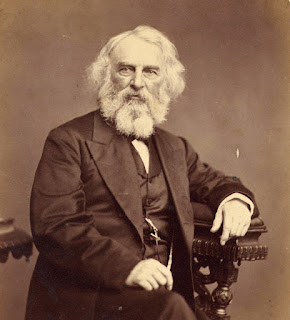Search This Blog
Click 4 Freedom is a blog set up to help the people defense force and refugees in Karenni State.
Featured
- Get link
- X
- Other Apps
DREAMERS BY SIEGFRIED SASSOON
DREAMERS
Soldiers
are citizens of death's gray land,
Drawing
no dividend from time's to-morrows.
In
the great hour of destiny they stand,
Each
with his feuds, and jealousies, and sorrows.
Soldiers
are sworn to action; they must win
Some
flaming, fatal climax with their lives.
Soldiers
are dreamers; when the guns begin
They
think of firelit homes, clean beds, and wives.
I
see them in foul dug-outs, gnawed by rats,
And
in the ruined trenches, lashed with rain,
Dreaming
of things they did with balls and bats,
And
mocked by hopeless longing to regain
Bank-holidays,
and picture shows, and spats,

‘Dreamers’ is a poem by the British poet of the First World War, Siegfried Sassoon (1886-1967). Written while Sassoon was convalescing at Craiglockhart Hospital, ‘Dreamers’ is a poem which contrasts the realities of war with the soldiers’ longing for home and domestic comfort and security.
ANALYSIS
‘Dreamers’: the very
title tells us how Sassoon is depicting soldiers in this poem. Yet it does not
tell us the whole story. Rather than rejecting the idea of war as a noble and
heroic calling, Sassoon actually endorses such an idea: the soldiers are
standing in ‘the great hour of destiny’ and determined to win some ‘flaming,
fatal climax with their lives’.
‘Dreamers’ begins with
Sassoon describing soldiers as inhabitants of the ‘grey land’ of death.
Immediately, we are in No Man’s Land, in the trenches of the First World War.
This is the land of death because these men know they could die any moment:
today might be the day they are shot down by machine guns, or blown to pieces
by a shell. The concept of ‘tomorrow’ makes no sense to such men, since there
is no point in thinking about the future when you might be dead by tomorrow.
Sassoon uses a financial metaphor to describe this: the soldiers can draw ‘no
dividend’, i.e. no share of the profits.
Sassoon continues by
describing the soldiers as rooted to the present moment: that ‘great hour of
destiny’. Their fates are in the hands of destiny. These soldiers have their
own private quarrels or ‘feuds’, their jealousies, their sorrows; but
immediately, these are forgotten in the next line, as Sassoon reminds us that
these men have been made to commit themselves to action, rather than feeling.
Not only must they give their lives in the cause of the war, if necessary, but
they must go out, as we like to say, in a ‘blaze of glory’.
And yet note the
immediate contrast again in the next line, as we shuttle back from ‘action’ to
‘feeling’ or thought: ‘Soldiers are dreamers’. Even when the guns begin to fire
and their lives hang in the balance, these soldiers – ordinary men, sons,
fathers, brothers, husbands – think not in narrow military terms but of home
comforts, their wives in their clean beds (rather than the lice-ridden pallets
they sleep on in the trenches), and the warmth of their ‘firelit homes’ rather
than the cold, damp world of the Western Front.
In the final six lines of
‘Dreamers’, Sassoon contrasts these ‘firelit homes’ (dreamed of, but far away)
with the grim reality of the soldiers’ lives at war: instead of these firelit
homes they inhabit ‘foul dug-outs’, instead of their wives they have ‘rats’ for
company, and instead of their ‘clean beds’ they sleep in those ‘ruined
trenches’. The rest of the poem conjures a stock-image of pre-war English life:
cricket matches, Bank Holiday weekends, going to the cinema of ‘picture shows’,
and even commuting to work – at least that is a safe and ordinary existence.
Source: https://interestingliterature.com/2020/05/siegfried-sassoon-dreamers-analysis/amp/
Comments
Popular Posts
The Builders by Henry Wadsworth Longfellow
- Get link
- X
- Other Apps


So many Ads.
ReplyDeleteI feel sad after reading the poem. I also pray for the safety of our heroic comrades(Pdf).
ReplyDeleteClick click clicik
ReplyDeleteDone😊
ReplyDeleteLet's click to support our heroes.✊🏻
ReplyDelete🌄☕
ReplyDelete💜💜💜💜💜
ReplyDeleteHandsome 😍😍
ReplyDeleteWow 😂
Deletehote dl taw taw chaw tl nawt💞😂
DeleteThe man in the photo is so handsome.😽💞
ReplyDeleteSo manly.😽💞
Deletewe are only big nose.🤣😜
Deleteeng lo mant kya mal
ReplyDeleteHave a great day. Thanks for sharing.
ReplyDelete